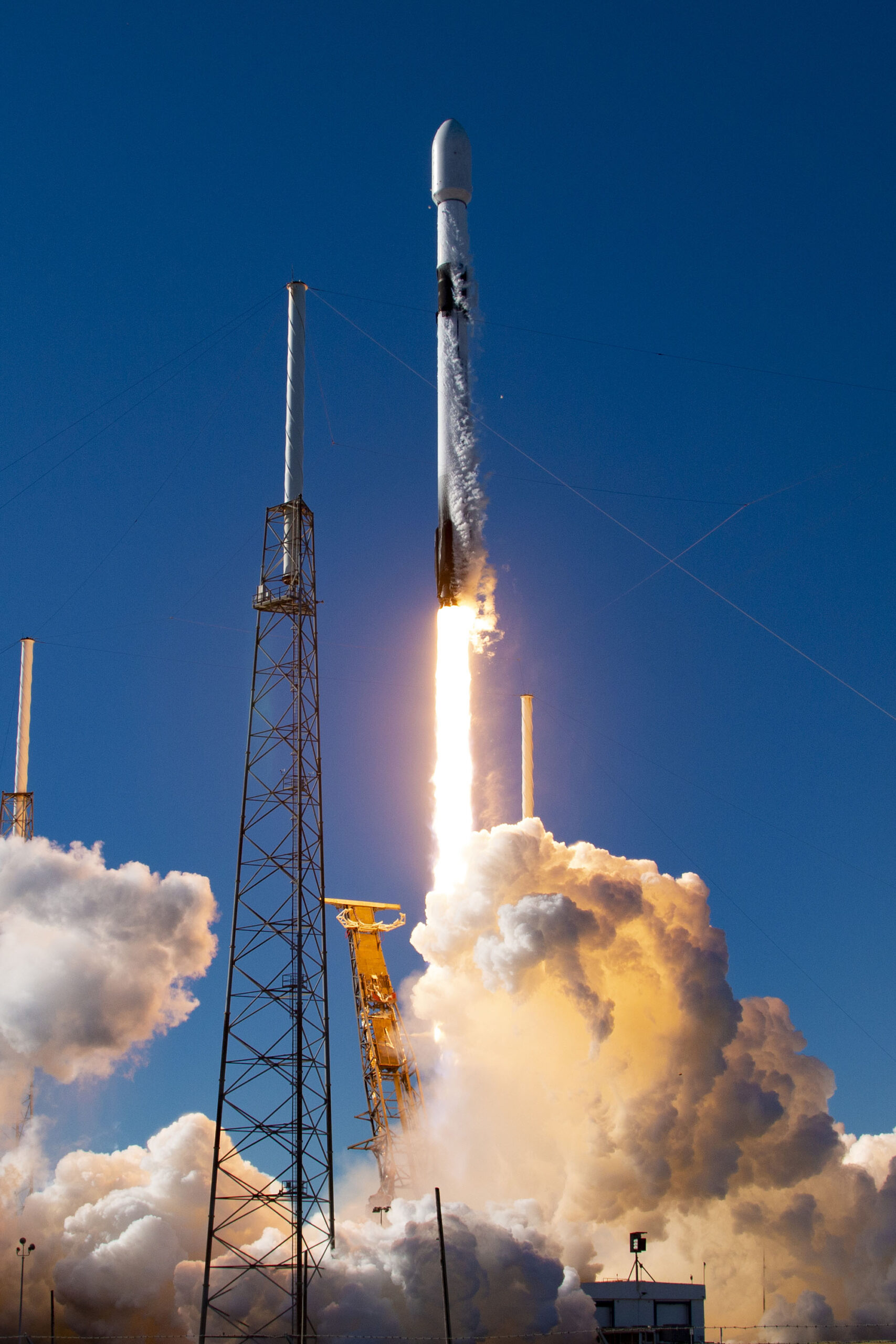News
D-Orbit Launches two ION Satellite Carrier on its seventh orbital transportation mission
Fino Mornasco, Italy, January 3rd, 2023: D-Orbit, the space logistics and orbital transportation company, launched Second Star to the Right, the seventh commercial mission of ION Satellite Carrier (ION), D-Orbit’s proprietary orbital transfer vehicle (OTV), and the first mission carrying to space two IONs on a single launch.
The Falcon 9 rocket lifted off today, January 3rd, 2023, at 9:56 a.m. ET (14:56 UTC) from the Space Launch Complex 40 (SLC-40) at Cape Canaveral Space Force Station (CCSFS), Florida. The two IONs were successfully deployed 01h 24m and 01h 26m after lift-off into a 525-kilometer Sun Synchronous Orbit (SSO).
“We are proud of this new milestone,” said Renato Panesi, Ph.D., D-Orbit’s Chief Commercial Officer. “In just two years, we have established a reliable orbital space transportation service and in 2023, with our fleet constantly growing, we’re going to be able to offer new, advanced services, including in-orbit data storage and computing, extended hosted payload capabilities, and enhanced orbital manoeuvres”.
With the launch successfully completed, D-Orbit’s mission control team is executing the mission’s launch and early orbit phase (LEOP), performing a series of health check procedures in preparation for the operational phase.
Partnering with Valued Customers ION is a versatile and cost-effective OTV designed to precisely deploy satellites and perform orbital demonstrations of third-party payloads hosted onboard.
During the mission, ION SCV007 and SCV008 will deploy the following satellites:
- FUTURA-1 and FUTURA-3, a 3U and a 6U satellite respectively, designed by NPC Spacemind. The satellites’ main purpose is to in-orbit demonstrate NPC Spacemind’s platforms along with ARTICA, an innovative deorbiting sail device whose aim is to highly accelerate the orbital decaying time, offering a solution to the problem of space debris. Both spacecraft will be released through NPC Spacemind’s SMPOD12XL-3X CubeSat deployer. Designed to provide quality and performance, together with the maximum handling flexibility that allows mechanism reset and rearming in a few seconds, SMPOD aims to ensure reduced lead time and strong economic competitiveness.
- Four five-kg CubeSats by Astrocast. The spacecraft, equipped with onboard ADCS and propulsion capabilities for precise pointing and orbit maneuvering, will complete Astrocast’s global coverage for its IoT Service.
- SHARJA-SAT-1 and TAUSAT2, respectively from the Sharjah Academy for Astronomy, Space Sciences (SAASST) and the Tel Aviv University (TAU), onboard through a contract with ISIS Space.
• Sharjah-Sat-1 is the first CubeSat mission of SAASST, in collaboration with Istanbul Technical University Space Systems Design and Test Laboratory (ITU-SSDTL) and Sabanci University (SU). The satellite’s primary payload is an improved X-Ray detector (iXRD), with the objective of detecting hard X-rays from very bright X-ray sources. The secondary payload is a dual-camera system for Earth imaging.
• TAUSAT2 is a 2U CubeSat developed using commercial off-the-shelf (COTS) components. The satellite carries a science payload of Light Emitting Diodes that will be used to conduct a peaceful scientific experiment by TAU in optical tracking of miniature objects in space. In addition, the satellite includes an S-band transmitter aimed at demonstrating a novel communication protocol, suggested by TAU, in various signal-to-noise regimes.
• Kelpie 1, is a 3U EPIC CubeSat, designed and built by AAC Clyde Space. The Kelpie 1 spacecraft will deliver Automatic Identification System (AIS) data exclusively to ORBCOMM and its government and commercial customers, under an exclusive Space Data as a Service deal. The state-of-the-art satellite weighs just 4 kg and features a proprietary low-noise bus architecture, multiple SDR payload, and an advanced antenna concept developed by Oxford Space Systems, to maximize AIS detections of all message types.
This mission will also include the in-orbit demonstration of third-party hosted payloads:
• DRAGO-2 (Demonstrator for Remote Analysis of Ground Observations), a compact SWIR camera developed by the Instituto de Astrofísica de Canarias (IAC) for Earth observation from space. It is the successor of DRAGO-1, which was successfully launched and commissioned as part of the ION SCV02 mission in 2021. DRAGO-2 is capable of obtaining high-quality multispectral images in the short-wave infrared and it is equipped with an on-board image processing unit, which allows it to compress, encrypt and even apply complex image processing algorithms, such as super-resolution, to the acquired images.
• Genergo-2, a new type of space propulsion system developed by Genergo to test new technical specifications that will also serve for future developments. The modelling and definition of the on-orbit experiment has been carried out in conjunction with the Department of Aerospace Science and Technology of the Milan Polytechnic.
• Cryptosat-2, the enhanced version of a prototype nanosatellite developed by Cryptosat for secure cryptographic applications such as electronic voting, trusted random beacon, and verifiable delay enforcement for smart contracts.
Second Star to The Right is ION’s first mission in 2023. D-Orbit launched its first ION in September 2020 aboard an Arianespace VEGA launcher, then five further missions aboard SpaceX Transporter missions. With this launch, the Company will have transported to space more than 90 payloads collectively.
